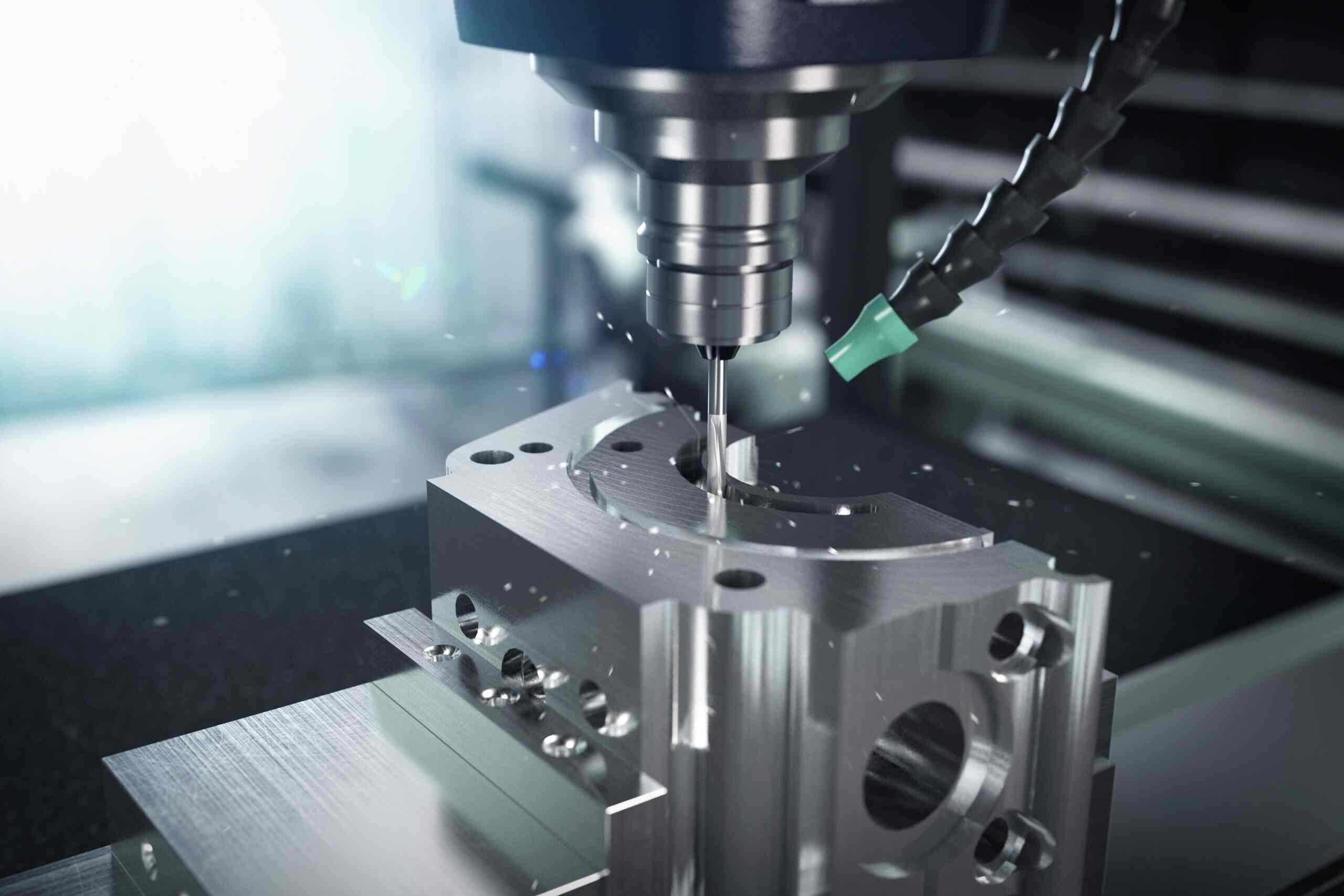
Prototypes can be found just about anywhere you find innovation. That’s certainly been the case with the military and defence industries. Even when the powers-that-be have resisted using prototypes, they keep demonstrating their value.
In the defence industry, prototypes have had a complicated history. Contractors often opposed competitive prototyping because of the high upfront costs and the risk of not recouping their investment. Likewise, defence agencies have traditionally been concerned that prototyping increases development costs, despite clear evidence that it ultimately saves money. Studies consistently show that product development benefits significantly from early prototyping, yet adoption has sometimes lagged.
But that is changing. Today, prototyping is becoming a standard part of defence innovation. With advanced CNC machining, engineers and decision-makers can quickly create high-quality prototypes, test them in realistic conditions, and identify potential problems before transitioning to full production. Prototyping reduces costly errors, speeds up innovation, and fosters collaboration—three essential benefits in defence product development.
What Is CNC Machining in Prototyping?
CNC machining is the process of using computer numerical control (CNC) machines—such as mills, lathes, and routers—to cut, shape, and finish parts from solid materials. It’s one of the most versatile manufacturing methods available, and it has become an essential tool for rapid prototyping.
Unlike 3D printing, which builds parts layer by layer, machining prototype parts begins with a block of material and removes what isn’t needed. This subtractive manufacturing technique makes it ideal for producing prototypes that are identical in material and tolerance to the final production version. Defence projects often require tight tolerances, high-strength alloys, and materials that can withstand extreme conditions, and CNC turning and milling deliver all of these.
For prototyping, CNC machining offers flexibility that few other manufacturing processes can match. Engineers can adjust a design, update the CAD/CAM file, and have a new version machined within hours. This ability to quickly iterate makes it perfect for rapid testing and refinement.
Different types of CNC machines also play a role in defence prototyping:
- CNC mills are ideal for producing complex geometries and precision features in metals and composites.
- CNC lathes are well-suited for round or cylindrical parts such as connectors, housings, and weapon system components.
- Multi-axis machines enable the creation of complex parts with fewer setups, thereby reducing time and cost in prototyping.
Together, these capabilities give design engineers the confidence that what they are testing is as close as possible to the finished part, while still allowing for fast, cost-effective changes when needed.
Benefits of Prototyping in Defence Solutions
In the defence industry, the stakes are high. A single design flaw can lead to costly rework, delayed programs, or compromised safety. Prototyping with CNC machining helps mitigate these risks by identifying problems early and improving the final product’s quality and reliability.
Prototyping also supports innovation. New concepts—whether they involve materials, sensors, or entire subsystems—can be tested quickly, giving defence contractors the flexibility to explore bold ideas without committing to full production. In fact, many breakthrough technologies have gained acceptance only after successful prototype trials.
For example, competitive prototyping processes have been used in aircraft programs to test avionics and control systems before committing to production. In naval applications, CNC-machined prototypes have enabled engineers to refine designs for shipboard components that are exposed to harsh marine conditions. The ability to prototype quickly not only saves money but also ensures the equipment is mission-ready.
Beyond being cost-effective, prototyping also fosters trust and confidence. Contractors, engineers, and military stakeholders can see and test the prototype themselves, aligning expectations and ensuring they meet all the requirements. This transparency reduces misunderstandings, accelerates approval processes, and increases confidence in the final design.
In short, defence CNC prototyping delivers:
- Early identification of design flaws
- Reduced rework and production costs
- Faster innovation cycles
- Improved collaboration between contractors and clients
- Higher final product quality and reliability
Four Key Scenarios Where Prototyping Is Beneficial
The latest U.S. Department of Defence Prototyping Guidebook identifies four scenarios where prototyping is especially valuable. CNC machining aligns perfectly with all of them.
1. Rapid Learning (Test-Analyze-Fix-Test)
Rapid learning uses the “Test-Analyze-Fix-Test” (TAFT) approach. Instead of waiting until a whole system is complete, engineers focus on specific features or components, test them, make changes, and test again.
CNC machining makes this possible by enabling quick adjustments to designs. Once a CAD model is updated, a CNC machine can produce the revised part with high accuracy. For defence programs involving complex systems—like aircraft sensors, armoured vehicle subsystems, or missile guidance components—this ability to make minor but precise modifications saves months of development time.
Another example is in missile system development, where prototypes of fin actuators and housings were CNC-machined and tested repeatedly. Each cycle helped refine performance, eventually leading to a reliable final design. Without CNC prototyping, these iterations would have been too costly or time-consuming.
2. Accelerated Demonstration
Accelerated demonstration prototypes are designed to prove that a new concept, material, or technology is viable. In defence, this might mean testing a new sensor for an aircraft, evaluating a novel composite material for armour, or trialling an updated communications module.
CNC machining is particularly valuable here because it allows engineers to build prototypes that behave exactly like production parts. Instead of simulating performance, stakeholders can see the concept in action. For instance, when testing advanced infrared sensors for surveillance drones, CNC-machined housings and mounts allowed for the demonstration of the technology under real operating conditions.
The fast turnaround of CNC machining also reduces the time and money needed to move from concept to demonstration, giving decision-makers the confidence to proceed.
3. Rapid Deployment
Rapid deployment prototypes are sometimes so effective that companies end up using them in the field. Although engineers and designers may not have planned it, this does highlight the strength of CNC machining. Because prototypes are made from the same materials and to the exact tolerances as production parts, they can be mission-ready.
A notable example is the urgent need for improved armoured vehicle protection during conflict. CNC-machined prototypes of add-on armour kits were designed, produced, and tested in record time. The prototypes were so effective that they were immediately deployed to protect troops, bridging the gap until mass production could catch up.
This capability underscores why defence CNC prototyping is not just about design validation—it can directly support operational readiness.
4. Fail Fast, Fail Cheap
The “fail fast, fail cheap” approach embraces failure as a step toward success. Rather than spending years perfecting a design before testing, defence engineers intentionally test early, knowing that failures will guide improvements.
CNC machining supports this by producing affordable prototypes that are close enough to the final product to provide meaningful data. For example, in testing new materials for aircraft landing gear components, CNC-machined prototypes were subjected to stress tests until failure. The lessons learned from these early failures informed the final design, resulting in millions in potential rework costs saved.
By failing fast and cheaply, defence contractors reduce long-term risk while ensuring that final products are battle-ready.
Challenges to Prototyping in Defence and How CNC Machining Helps
Despite the evident benefits, prototyping in defence has historically faced resistance. Contractors have often worried about the high cost of prototypes, especially when they may not transition directly into production. Defence agencies, too, have at times struggled with a “fear of failure,” associating unsuccessful prototypes with wasted resources rather than necessary learning.
In the U.S., the Government Accountability Office (GAO) has reported that the Department of Defense (DoD) has become increasingly risk-averse—slowing innovation in some programs. Similarly, in Canada, concerns over risk, procurement timelines, and regulatory compliance have sometimes constrained rapid prototyping in defence.
However, this mindset is evolving. Initiatives like Canada’s IDEaS program and the Industrial and Technological Benefits (ITB) policy are encouraging more aggressive prototyping, testing, and iterative design in Canadian defence innovation. These policies aim to de-risk early-stage development and ensure Canadian companies can actively contribute to defence readiness through applied R&D and rapid prototyping.
Across North America, defence agencies are now recognizing prototyping as a critical way to reduce long-term costs, speed up development, and improve final product reliability.
CNC machining helps address the traditional challenges of prototyping:
- Cost concerns: While prototypes are an investment, CNC machining makes them cost-effective by using the duplicate CAM files and processes for production. Doing this reduces waste and accelerates the transition to full-scale manufacturing.
- Time delays: CNC machining enables rapid iteration. Updates to a design can be made quickly, shortening development cycles.
- Performance risks: CNC prototypes are made from the same materials and tolerances as production parts, ensuring test results reflect real-world performance.
Machine shops like Ben Machine are well-positioned to support defence contractors in this shift. By specializing in high-mix, low-volume production, they can deliver high-quality prototypes that strike a balance between cost, speed, and reliability. This type of production allows defence clients to innovate confidently, knowing their prototypes are both practical and precise.
Collaborating With Clients: Improving Communication and Alignment
Prototyping isn’t just about testing parts—it’s also about strengthening collaboration. Defence projects often involve multiple stakeholders, from design engineers to program managers to end-users in the field. Prototypes make communication easier by providing a physical, testable product that everyone can evaluate and assess.
With CNC prototyping, engineers and manufacturers can work closely together to ensure designs are practical to produce while still meeting performance requirements. Miscommunications that might occur over drawings or simulations are resolved when a physical prototype is available for review.
For example, a defence contractor developing a new radar mount worked with a CNC machine shop to produce prototypes at several stages of the design. Each prototype allowed both teams to assess mounting strength, weight distribution, and ease of assembly. By the time the final design was approved, all stakeholders agreed, reducing the risk of costly redesigns later in the program.
This collaborative approach fosters trust, accelerates decision-making, and ensures the final product aligns with both design intent and operational requirements.
The Future of CNC Machining in Defence Prototyping
CNC machining will continue to play a central role in defence prototyping, but the future holds even more possibilities. Advancements in machine automation, artificial intelligence, and hybrid manufacturing will further enhance what’s possible.
- Automation and AI: Smarter CNC machines can optimize cutting paths, predict cutting tool wear, and reduce setup times. These advantages mean even faster prototyping with less manual oversight.
- Additive and subtractive manufacturing: Combining 3D printing with CNC machining allows engineers to prototype complex geometries quickly, then finish them with precision machining. This hybrid approach is already gaining traction in aerospace and defence.
- Digital twins: Virtual models tied directly to CNC machining processes will allow real-time validation, reducing the gap between design and prototype.
These innovations will make prototyping even faster, more accurate, and more cost-effective. For defence contractors, this means reduced risk, shorter development cycles, and better alignment with mission requirements.
Conclusion
Prototyping has become a cornerstone of innovation in the defence industry, and CNC machining makes it possible to prototype with speed, accuracy, and confidence. From early learning and accelerated demonstrations to rapid deployment and cost-effective failure testing, defence CNC prototyping delivers unmatched benefits.
By reducing errors, improving collaboration, and ensuring final product reliability, CNC machining in prototyping saves time and money while increasing mission readiness.
Defence companies that embrace CNC prototyping will be better equipped to innovate quickly and deliver high-quality solutions. To learn how Ben Machine can support your next prototyping project with precision CNC machining, contact us today.







